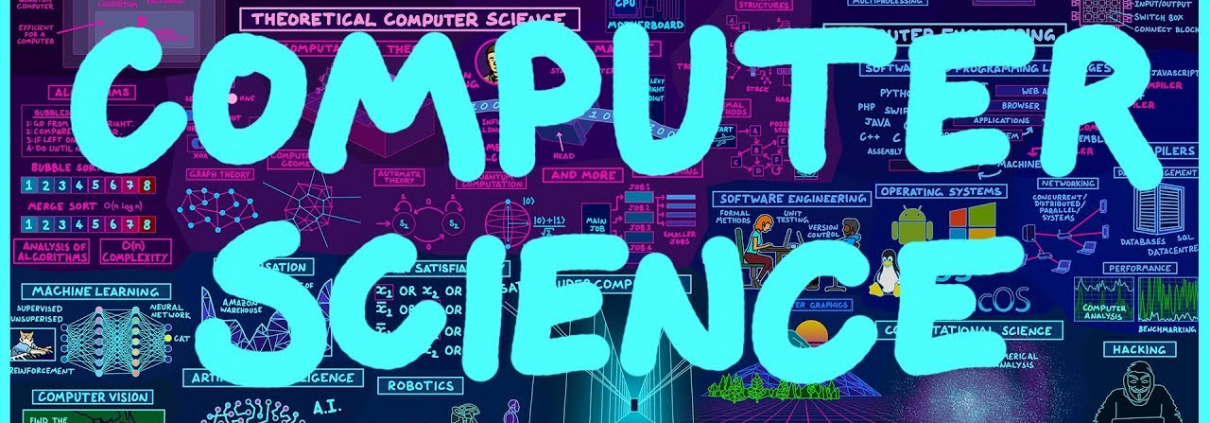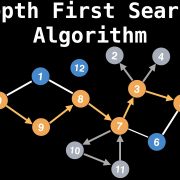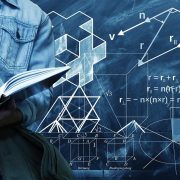Bilgisayar Bilimlerine Giriş
Teknolojinin harikalarla dolu çağında, bilgisayar bilimleri yenilik ve ilerlemenin temel taşı olarak duruyor. Akıllı telefonlardan karmaşık simülasyonlara, iletişimden ticarete, eğlenceden eğitime kadar hayatımızın her alanını dönüştüren donanım ve yazılımın kusursuz uyumunun ardındaki itici güç. Bu yazıda, bilgisayar bilimlerinin gizemli dünyasını keşfe çıkacağız; temel kavramlarını, tarihsel kökenlerini ve dünyamız üzerindeki derin etkilerini açığa kavuşturacağız. Kendi merak yolculuğumdan ilhamla, bu alanı sizin için sade ve heyecan verici bir şekilde anlatacağım. Hazırsanız, başlayalım!
Bilgisayar Bilimlerinin Özü
Bilgisayar bilimleri, özünde algoritmalar, veri yapıları ve bilgisayarların tasarımını ile işlevlerini yöneten ilkelerin sistematik bir çalışmasıdır. Teorik temellerden pratik uygulamalara kadar geniş bir disiplindir. Bilgisayar bilimcileri, günlük kullandığımız cihazları ve yazılımları güçlendiren araçları ve teknikleri yaratan dijital evrenin mimarlarıdır. Bir yazılım projesinde çalışırken, bu disiplinin ne kadar geniş bir etkiye sahip olduğunu fark ettim; her kod satırı, bir sorunu çözmek için bir tuğla gibiydi.
Tarihsel Evrim
Bilgisayar bilimlerinin kökenleri, insanların hesaplama ve veri manipülasyonu için zekice mekanizmalar geliştirdiği antik çağlara uzanır. Ancak modern bilgisayar bilimlerinin temel kavramları, 20. yüzyılda şekillenmeye başladı.
Hesaplama Makinelerinin Doğuşu
17. yüzyılda mekanik hesap makinelerinin icadı, otomatik hesaplamaya doğru ilk adımları attı. 19. yüzyılda Charles Babbage’ın Analitik Makine tasarımları, modern bilgisayarların temelini oluşturdu, ancak o dönemin teknolojisi bu vizyonu hayata geçiremedi. Babbage’ın fikirleri, bugün kullandığımız sistemlerin tohumlarını ektiğini düşünmek büyüleyici!
Turing ve Teorik Bilgisayar Bilimlerinin Doğuşu
20. yüzyılda, Alan Turing’in hesaplanabilirlik ve Turing makinesi üzerine yaptığı çığır açan çalışmalar dönüm noktası oldu. Fikirleri, hesaplamanın sınırlarını ve yeteneklerini anlamayı amaçlayan teorik bilgisayar bilimlerinin temelini oluşturdu. Turing’in II. Dünya Savaşı’nda Alman Enigma kodunu kırmadaki katkıları, hesaplama düşüncesinin gerçek dünyadaki etkisini gösterdi. Bir şifreleme projesinde çalışırken, Turing’in mirasının ne kadar güçlü olduğunu hissettim.
Dijital Devrim
20. yüzyılın ortalarında dijital bilgisayarlar ortaya çıktı. 1940’larda geliştirilen Elektronik Sayısal Entegratör ve Bilgisayar (ENIAC), ilk programlanabilir bilgisayarlardan biriydi. Bu, pratik bilgisayar bilimlerinin başlangıcı oldu ve donanım, yazılım ve ağ teknolojilerinde hızlı ilerlemelere yol açtı.
Bilgisayar Bilimlerinin Temel Kavramları
Algoritmalar ve Veri Yapıları
Algoritmalar, problemleri çözmek için adım adım talimatlardır; veri yapıları ise verileri verimli bir şekilde organize etme ve depolama yöntemleridir. Bilgisayar bilimlerinin kalbi olan bu kavramlar, bilginin yazılımlar tarafından nasıl işlendiğini belirler. Bir sıralama algoritması geliştirirken, doğru veri yapısının performansı nasıl artırdığını deneyimledim.
Programlama Dilleri
Programlama dilleri, insan fikirleriyle makine yürütmesi arasında köprü kurar. Söz dizimi ve anlam bilimi aracılığıyla bilgisayarlarla iletişim kurmamızı sağlar. Python, Java ve C++ gibi diller, yazılım geliştirmenin yapı taşlarıdır. İlk Python projemde, bir veri analizi aracı yazarken bu dillerin gücünü keşfettim.
Bilgisayar Mimarisi ve Organizasyonu
Bilgisayar mimarisi, işlemciler, bellek ve giriş/çıkış cihazları gibi bilgisayar sisteminin donanım bileşenlerinin tasarımını inceler. Organizasyon ise bu bileşenlerin programları etkili bir şekilde yürütmek için nasıl etkileşime girdiğine odaklanır. Bir simülasyon projesinde, donanımın yazılımı nasıl desteklediğini anlamak bana yeni bir perspektif kazandırdı.
Hesaplama Teorisi
Bu teorik dal, nelerin hesaplanabilir olup olmadığını sorgular. Otomata teorisi, biçimsel diller ve karmaşıklık teorisi, hesaplamanın teorik sınırlarını anlamamıza yardımcı olur. Bu soyut kavramlar, bir algoritma tasarımı projesinde sınırları zorlamamı sağladı.
Yapay Zeka ve Makine Öğrenimi
Yapay Zeka (AI) ve Makine Öğrenimi (ML), bilgisayar bilimlerinin en ileri alanlarındandır. AI, insan zekasını taklit eden makineler yaratmayı, ML ise bilgisayarların verilerden öğrenmesini sağlayan algoritmalar geliştirmeyi hedefler. Bir görüntü tanıma projesinde, ML ile nesneleri sınıflandırmak inanılmaz bir deneyimdi.
Gerçek Dünya Etkisi
Bilgisayar bilimlerinin hayatımızdaki etkisi ölçülemez. Akıllı telefonlardan arama motorlarına, tıbbi görüntülemeden uzay keşiflerine kadar, bu disiplin dünya genelinde endüstrileri dönüştürdü.
İletişim ve Bağlantı
İnternet, bilgisayar bilimlerinin bir ürünü olarak iletişimi, bilgiye erişimi ve ticareti yeniden tanımladı. Sosyal medya platformları, e-posta ve video konferanslar, insanları birbirine yaklaştıran örneklerden sadece birkaçı. Bir ağ tabanlı uygulama geliştirirken, bu bağlantının gücünü hissettim.
Sağlık ve Tıp
Bilgisayar bilimleri, tıbbi teşhis, görüntüleme ve ilaç keşfinde önemli bir rol oynar. Gelişmiş algoritmalar, tıbbi görüntüleri analiz eder, hasta verilerinde desenler bulur ve ilaç etkileşimlerini simüle ederek araştırmaları hızlandırır. Bir sağlık projesinde, veri analiziyle hasta sonuçlarını iyileştirmeye katkıda bulundum.
Eğlence ve Oyun
Eğlence endüstrisi, bilgisayar bilimleri yenilikleriyle gelişiyor. Video oyunları, sanal gerçeklik deneyimleri ve akış platformları, karmaşık algoritmalar ve son teknoloji donanımlarla sürükleyici deneyimler sunar. Kendi oyun prototipimi geliştirirken, bu teknolojilerin yaratıcılığı nasıl ateşlediğini gördüm.
Çevresel Sürdürülebilirlik
Bilgisayar bilimleri, çevresel korumaya da katkıda bulunur. Simülasyonlar ve veri analiziyle, araştırmacılar çevresel değişiklikleri modelleyebilir, hayvan popülasyonlarını takip edebilir ve kaynak yönetimi stratejilerini optimize edebilir. Bir çevre projesinde, veri analiziyle daha sürdürülebilir bir çözüm geliştirdim.
Sonuç
Teknolojinin günlük yaşamın dokusuna kusursuzca işlendiği bir çağda, bilgisayar bilimleri bu dönüştürücü değişimlerin rehber gücü olarak duruyor. Mekanik hesaplama makinelerinden yapay zekanın sofistike algoritmalarına kadar, bu disiplin dünyamızı şekillendirmeye devam ediyor. Geleceğe baktığımızda, bilgisayar bilimlerinin yenilik, problem çözme ve ilerlemedeki rolü daha da genişleyecek, dijital evrenin sonsuz olasılıklar sunan bir alan olarak kalmasını sağlayacak. Kendi bilgisayar bilimleri yolculuğum, hem teknik hem de yaratıcı yönlerimi geliştirdi ve bu alanda hayal gücünün sınırlarının olmadığını gösterdi!
Siz bilgisayar bilimleriyle hangi projelerde çalıştınız? İlginç bir deneyim mi yaşadınız? Yorumlarda paylaşın, birlikte tartışalım! Daha fazla ipucu için bloguma göz atın veya benimle iletişime geçin!








[…] Bilgisayar bilimi temelleri, genellikle sadece yazılımcılar veya teknoloji uzmanları için bir alan olarak algılansa da, aslında herkesin öğrenebileceği ve günlük hayatına entegre edebileceği bir disiplindir. Temelinde, bir sorunu tanımlama, analiz etme ve etkili bir şekilde çözme yaklaşımı yatar. Bu sayede, yeni beceriler edinmekten tutun da günlük problemlere analitik bir bakış açısı getirmeye kadar pek çok alanda fayda sağlar. Eğer “bilgisayar bilimi temelleri” üzerine bir yolculuğa çıkmak istiyorsanız, bu yazı tam size göre. Hem yeni başlayanlar için temel kavramları açıklayacağız hem de pratik örneklerle konuyu derinleştireceğiz. […]
[…] is a core operation in computer science, enabling us to locate specific elements within a dataset efficiently. Among the plethora of search […]
[…] algoritmalar, bilgisayar bilimi ve matematikte temel bir kavramdır ve genellikle her adımda yerel olarak en uygun seçimleri […]
[…] Bilgisayar bilimi dünyasında, veriler her hesaplamanın merkezinde yer alır. Veriler çeşitli biçimlerde gelir ve bilgisayar bilimcileri ve programcılar, verilerle etkili bir şekilde çalışmak için veri türlerini kullanır. Veri türleri, verilerin doğasını tanımlar ve hangi değerlerin depolanabileceğini ve bunlar üzerinde hangi işlemlerin gerçekleştirilebileceğini belirtir. Veri türlerini anlamak, verimli ve hatasız kod yazmak için temeldir. Bu makalede, bilgisayar bilimlerindeki tüm temel veri türlerini inceleyeceksiniz. […]